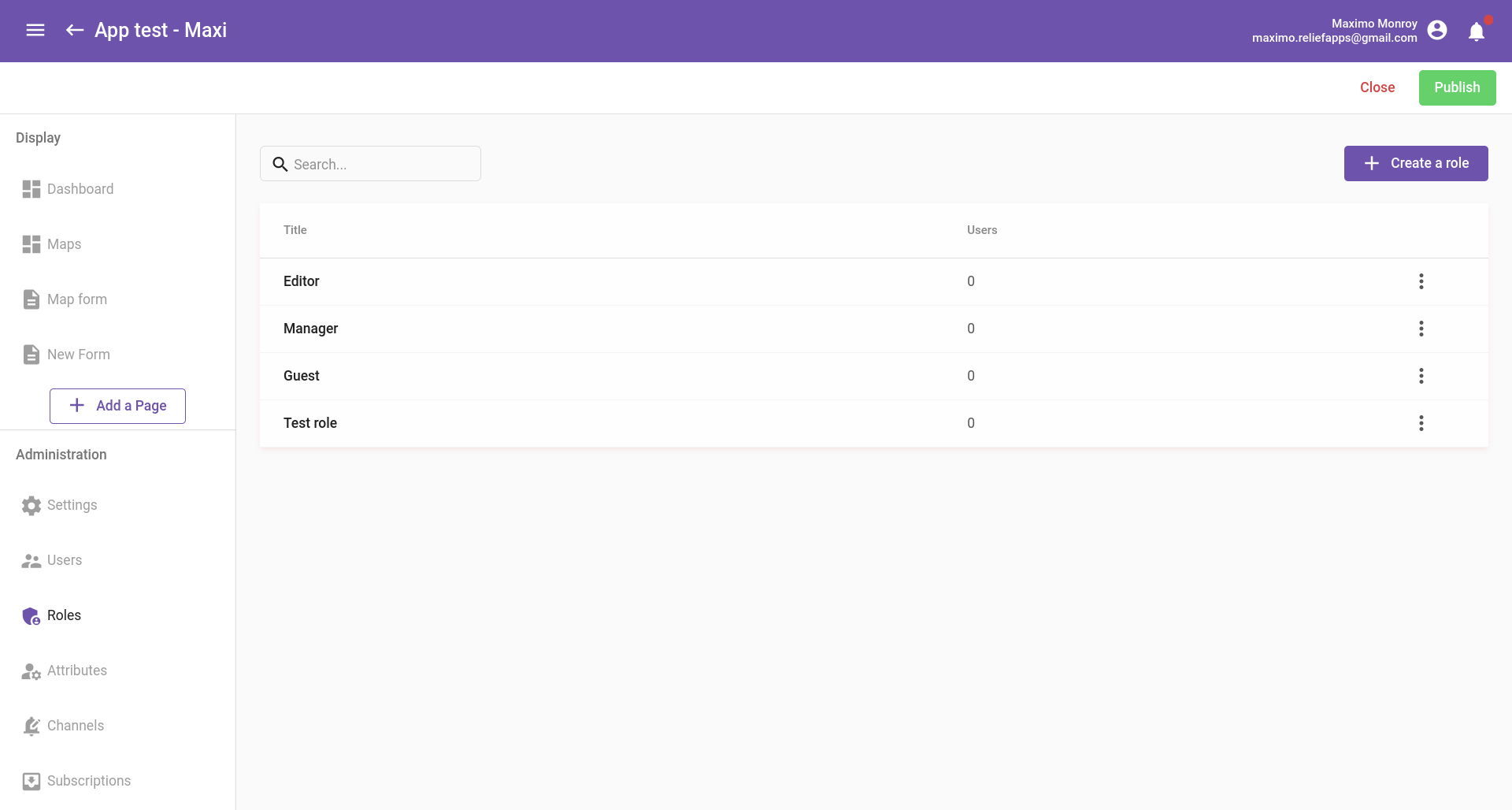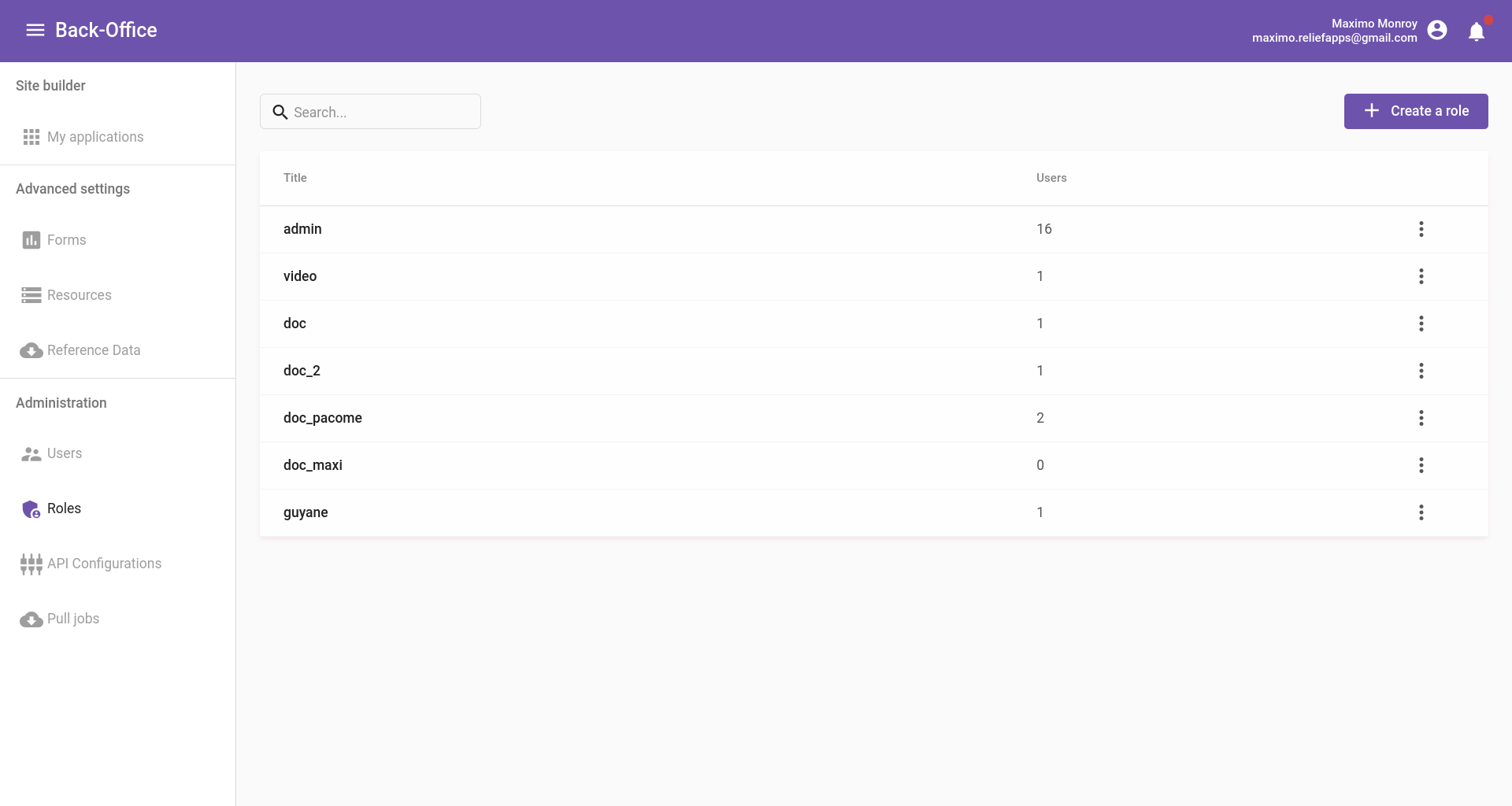Roles
Roles are used to assign the same permissions to a group of users. A user should always have at least one role in order to define its permissions. There are two types of roles, global roles which are used to define permissions in the back-office, and application roles which are used to define permissions in a Oort application.
Location
Since there are two types of roles, you can access them in two different pages.
Global roles page

Application roles page (when inside an application)

Basic usage
You can create as many roles as you want and then assign users to these roles. To do so, follow those steps:
- Click on the ‘Create a role’ button.
- Choose a role title and click on the ‘Create’ button. Now you should see your role in the list.
- Click on the menu button corresponding to your role and then on the ‘Edit’ button.
- You can configure your role’s permissions and the channels to which it listens to.
- Finally you can go to the user page and edit one of them to add this new role to its roles list.
Feature description
Roles are originally meant for permissions but can also define channels which are used for notifications.
In order to invite a user to the back-office, you must assign it a global role. If you want to invite it to a Oort application, you must assign a role from this application.
| Permissions | These are the so-called administrator permissions from the permissions page. It’s the first layer of permissions, it gives access to Oort components. |
| Channels | These are used by the notification manager to know which channels to listen to for each user. |